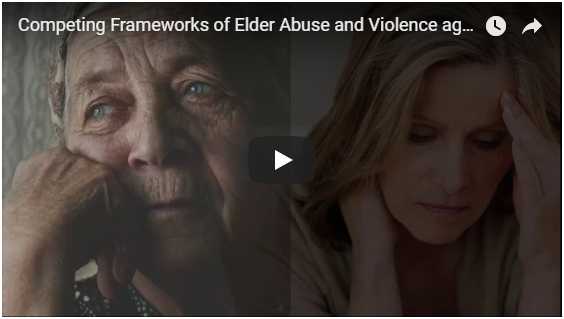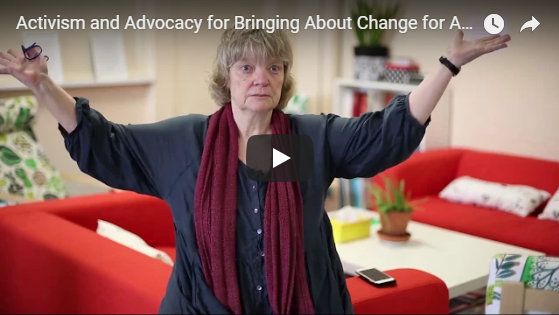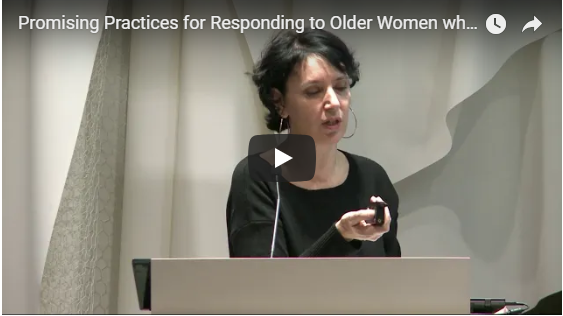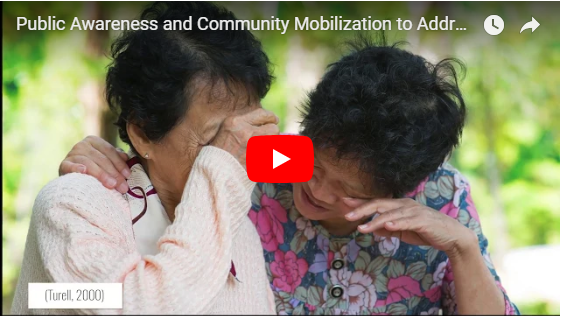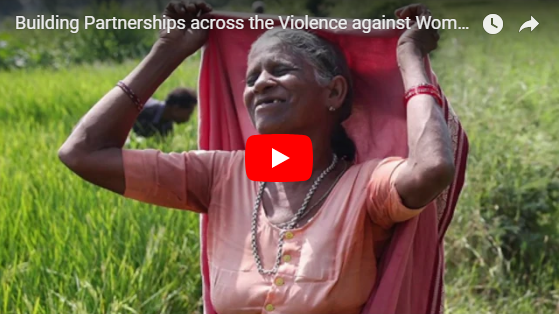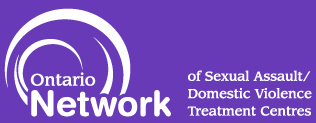
The Problem of Violence Against Older Women
Worldwide, the majority of the older adult population is women (UN DESA, 2015). As the population of older women grows, the magnitude of the problem of violence against older women will increase. Although some studies have shown that, compared to older men, older women are at a heightened risk of experiencing certain forms of abuse, and may require specific services and supports that take into account the impact of both their gender and age, the elder abuse and violence against women sectors have continued to work largely in isolation from each other (James, Dickinson, & Struthers, 2015). This has often resulted in a failure to provide older women with the full complement of resources needed to prevent and mitigate the occurrence and harmful health and social consequences of victimization. Click here for a visual on "Population Ageing by Sex Worldwide and in Canada."
Working at the Intersection of the Elder Abuse and Violence Against Women Sectors: An Interdisciplinary Forum of International Leaders to Advance Research, Policy, and Practice
This international knowledge exchange forum, hosted by Women’s College Research Institute at Women's College Hospital, the Ontario Network of Sexual Assault/Domestic Violence Treatment Centers, and Elder Abuse Ontario was held in November 2017. The purpose of the forum was to bring together key stakeholders, including established and emerging scholars/researchers, government decision-makers, leaders of professional associations, directors of service provision, and trainees to learn from interdisciplinary and international experts working at the cutting edge of the elder abuse and violence against women sectors.
Strategies to Address Violence Against Older Women
In order to share the forum presentations with a wider audience, including frontline providers and the public, the following five video learning modules were developed. These modules are focused on strategies to address violence against older women and were made possible through funding by the Government of Ontario.
Before Starting
Each learning module is comprised of a video approximately 30 minutes in length. These modules can stand alone or be completed as a series, depending on one's learning needs.
As you move through these modules, it is essential to consider that older women are not a monolithic group, and in addition to experiences of ageism and sexism, have lived experiences that are further shaped by their unique characteristics and identities such as their sexual orientation, gender identity, social class, race/ethnicity, and occupation. These experiences can impact the rates and nature of violence and access to and interactions with systems and services (CREVAWC, 2016). See below for Dr. Janice Du Mont talking about The Learning Network's 2014 adaptation of the CRIAWI/ICREF's Intersectionality Wheel Diagram.
Title: Competing Frameworks of Elder Abuse and Violence Against Women
Presenter: Dr. Patricia Brownell
Learning Objectives:
- Identify how the differing definitions within each framework are limited in their ability to adequately capture the extent and nature of violence against older women.
- Develop an understanding of how the differing frameworks impact data collection and research methods.
- Develop an understanding of how the differing frameworks impact policy and practice.
- Recognize the Human Rights Perspective as a preferable alternative to the other frameworks.
- Identify recommendations for addressing violence against older women moving forward.
Click here to view the module
Title: Activism and Advocacy for Bringing About Change for Abused Older Women
Presenter: Dr. Jane Mears
Learning Objectives:
- Become familiarized with the issues facing older women and the values and activities of the Older Women’s Network in Australia.
- Enhance understanding of how to conduct participatory and collaborative research with and for older women who are victims of abuse.
- Identify how activism and research can be used to develop strategies for structural change on the issue of violence against older women.
- Recognize the need for networking and collaborating across sectors, and with older women, to create sustainable services and equitable policy.
Click here to view the module
Title: Promising Practices for Responding to Older Women who have Experienced Violence
Presenter: Ms. Janice Abbott
Learning Objectives:
- Become familiarized with Atira Women's Resource Society and the support and services they provide women affected by violence.
- Understand what the Promising Practices project is, and how it was developed and implemented.
- Identify the various unique challenges that older women living with violence may face as described in the Promising Practices project.
- Recognize the eleven Promising Practices for working with older women living with violence.
Click here to view the module
Title: Public Awareness and Community Mobilization to Address Domestic Violence in Older Women
Presenter: Ms. Margaret MacPherson
Learning Objectives:
- Become familiar with the public education and awareness campaign, “It’s Not Right! Neighbours, Friends, & Families for Older Adults.”
- Recognize the warning signs and risk factors associated with domestic violence in older couples.
- Understand that domestic violence within older relationships is a complex issue with various individual and structural barriers to seeking help.
- Identify strategies for responding safely and effectively to violence in older couples as neighbours, friends, and family members.
Click here to view the module
Title: Building Partnerships Across the Violence Against Women and Elder Abuse Sectors
Presenters: Ms. Cailin Crockett and Ms. Bonnie Brandl
The objective of this learning module is to understand the importance of collaborating across sectors to advance policy and frontline responses to violence against older women.
The intersectoral collaboration exemplified by Crockett and Brandl demonstrates that we can:
- Increase the visibility and understanding of the problem of violence against older women by promoting the use of age-inclusive language and recognizing gender disparities in policy documents and development.
- Utilize government funding to support training and resources that promote systems change and enhance coordinated community responses to violence against older women.
Click here to view the module
References
- Centre for Research & Education on Violence Against Women & Children. (2014). Sexual Violence Awareness. London, ON: Learning Network. Retrieved from: http://www.vawlearningnetwork.ca/sites/vawlearningnetwork.ca/files/LN_Newsletter_Issue_9_2014_e_version_1.pdf
- Centre for Research & Education on Violence Against Women & Children. (2016). Violence Against Women who are Older. London, ON: Learning Network. Retrieved from: http://www.vawlearningnetwork.ca/sites/vawlearningnetwork.ca/files/Newsletter_Issue_18_Online.pdf
- James, K., Dickinson, R., Struthers, A. (2015) Older women fleeing violence and abuse in Canada: Bringing together separate spheres of practice. Journal of Elder Abuse & Neglect, 27, 454-469.
- Statistics Canada. (2017). Population by sex and age group. Ottawa, ON: Author. Retrieved from: http://www.statcan.gc.ca/tables-tableaux/sum-som/l01/cst01/demo10a-eng.htm
- United Nations. (2015). World population ageing. New York, NY: Author. Retrieved from: http://www.un.org/en/development/desa/population/publications/pdf/ageing/WPA2015_Report.pdf
